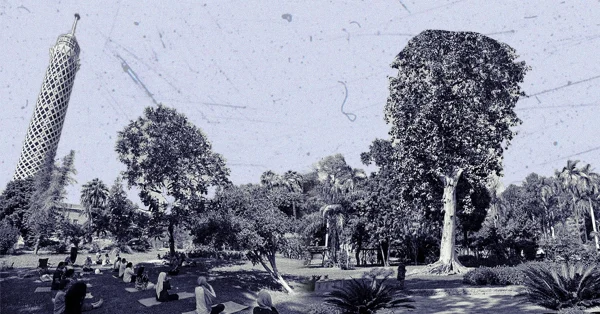
From a garden to an artificial forest… This is how the historic Zahria Garden will be destroyed!
It seems that the “development” bug has finally reached the historic Zahria Garden in Zamalek, where Bab Al-Masr got a look at the preliminary design for the park. Over the past few months, the garden has been the subject of much debate among Zamalek residents after they learned of plans to “develop” it. Over time, this word has become a headache and a nightmare for heritage lovers in Egypt, after many heritage parks were defaced, their trees and green spaces removed, and replaced with hundreds of interlocking tiles and concrete slabs, surrounded by dozens of cafes and restaurants.
According to the preliminary proposal for the Al-Zahria Park development project, the aim is to revitalize the urban space by transforming Al-Zahria into a vibrant and sustainable park capable of promoting community participation, cultural exchange, and providing an experience for recreation and entertainment. The new design draws inspiration from the park’s natural environment, incorporating organic elements and colors in an attempt to create a living space while preserving historical elements, especially the old trees, and integrating them with the new park components.
Loss of identity
On the ground, however, the project tends to introduce modern experiences into the park. This creates a clear conflict between preserving heritage and providing an entertainment experience. The project focuses more on entertainment than on preserving the park’s heritage. This approach conflicts with the need to preserve the authenticity of the heritage site.
The design indicates, in more than one place, a desire to transform the park into a “forest” through various visual and design tricks. This points to a major change in the nature of the park rather than simply restoring or rehabilitating it in a manner consistent with its historical character. This approach could lead to the loss of the park’s unique historical identity in favor of temporary aesthetic improvements aimed at attracting investment.
The project includes proposed attractions for a wide range of daytime and nighttime activities. Daytime activities include: large green spaces, wooded areas, recreational trails for walking, hiking and fitness, a food and beverage park, and a wide range of restaurants. In addition to a wide range of restaurants. Areas will also be allocated for live music events, community events, festivals, and temporary markets. Recreational facilities will include sports fields, a fitness center, and a children’s play area. Along with a collection of artwork, sculptures, and murals.
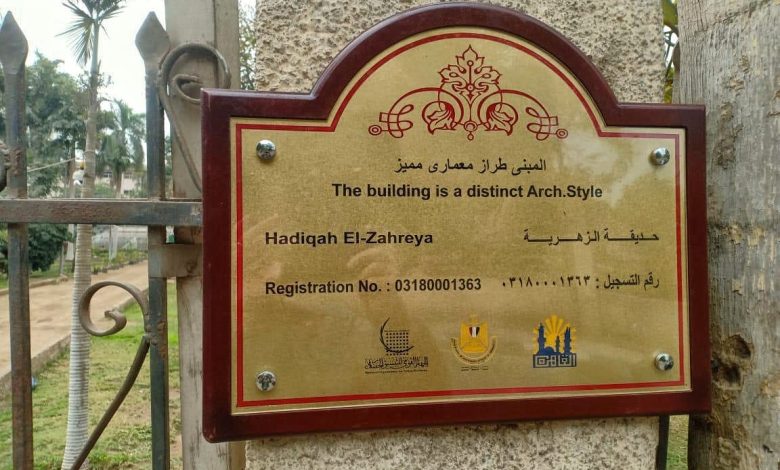
Nighttime attractions
Nighttime attractions include a new walking path that will serve as the main area for visitors to the park at night. Lighting and other effects will be provided to give the park a nighttime feel, and food services will also be available to park visitors. However, the idea of using the park at night implies a high degree of physical intervention that will alter the nature of the heritage park. The proposal suggests excessive commercial marketing of a quiet heritage site. This could transform the historical character of the park into a noisy entertainment center full of commercial activities. This raises concerns among specialists about preserving the original character of the park and the erosion of its authenticity and integrity. This would make it unrecognizable as a historic park.
As for the design of the restaurants and shops, a forest-like path will be created to encourage visitors to explore the park. The shop will be designed with winding paths and dark green colors and panels reminiscent of tropical plants mixed with earthy brown tones. Bright touches of yellow, red, and orange will be added in a forest flower pattern.
Attracting a diverse audience
The preliminary design seeks to attract a diverse audience of park visitors of all ages, with the aim of creating a comprehensive experience that promotes engagement and encourages visitors to stay in the park for longer periods of time. This will increase revenue. Restaurants will be dedicated to pizza, barbecue, desserts, tea and beverage kiosks, and healthy food and snacks.
There will also be areas for music and retail stores selling souvenirs. In addition to providing places for health and relaxation, there will be areas for yoga classes, massage, fitness, and other sports activities. There will also be an area for children’s activities, such as storytelling and interactive shows, and other play areas. This is in addition to other educational and recreational activities. The project also includes the construction of a boutique hotel within the park.
Creating an artificial environment
A source, who preferred to remain anonymous, told Bab Masr: The initial design is risky because it creates an artificial environment that overshadows the historical and actual identity of the park. This will transform it from a public heritage park into a commercial entertainment complex. This could damage the original function of the park and its historical integrity, which is deeply rooted in Egyptian heritage.
He added: “The ‘forest’ theme represents a general commercial aesthetic, as it has no direct historical or cultural connection to the heritage Zahraa Garden. It will fundamentally change its character to create a kind of experience similar to a theme park, rather than respecting its unique historical landscape.
He continued: “There is a direct contradiction with the principles of authenticity in preserving the park’s heritage. The scale of commercial activities such as hotels, restaurants, and nightlife indicates a primary motive, which is to generate revenue. Therefore, it is important to balance these activities with the preservation of the park to avoid damage that it may suffer in the future.
Furthermore, the theme of “forest” has no historical or cultural connection to Al-Zahraa Park as a heritage park in Egypt. This approach may conflict with the principles of authenticity, minimal intervention, and contextual appropriateness, which are fundamental to heritage conservation. Therefore, imposing this approach could strip the park of its original character. It is not just a green space, but a cultural landscape that tells the story of Cairo’s development and its connection to Khedive Ismail.

An entertainment experience
The source also pointed out that replacing the historical narrative of the park with a general entertainment experience would erode its heritage value. It is therefore important to modify the project and present a new narrative that stems from the park’s true history and authentic elements, rather than an imported theme aimed primarily at commercial attraction. This transformation could lead to the loss of its unique identity and turn it into something resembling a “recreational park” instead of preserving its essence as a peaceful historical park.
Respect for the site
The source believes that Law No. 144 of 2006, which prohibits the demolition or addition of buildings of distinctive architectural style associated with national history or historical figures, must be respected. Therefore, in the context of Al-Zahraa Park, it is necessary to commit to not distorting the historical fabric of the park or infringing on its heritage value. He emphasized that new additions must be clearly distinguishable from the original elements and designed in a manner that respects the architectural and aesthetic character of the site. The focus on the “forest” theme in the design of the buildings should also be avoided, as it may lead to the creation of structures that are not in keeping with the historical context of Egypt. This would be contrary to the principles of authenticity and urban harmony.
Involvement of the local community
The source concluded by stressing the importance of reviewing the design philosophy of the project in order to prioritize heritage preservation and authenticity over entertainment and commerce. Therefore, the park’s true history and authentic elements must be taken into account, rather than introducing an imported theme, because the goal is to enhance the park’s historical and cultural value while integrating new functions in a harmonious manner.
He also pointed out the importance of reviewing the scope of commercial activities to ensure that they complement the peaceful historical character of the park, rather than overwhelming it. Therefore, it is necessary to carefully designate areas for commercial activities to minimize their impact on the main green spaces and preserve the park as a public space. Heritage conservation experts, including architectural historians and landscape architects specializing in historic sites, as well as representatives of the local community, should be involved in all stages of planning, design, and implementation.

Laws and regulations
Historical gardens in Egypt are usually defined as “agricultural spatial architectural formations with historical significance.” This makes them a heritage element of importance and value that must be preserved.
Historic parks have been included alongside buildings and structures of value, subject to the same standards set out in the executive regulations of Law No. 144 of 2006. This law aims primarily to regulate the demolition of buildings and structures that are not in danger of collapse and to preserve architectural heritage.
The National Agency for Urban Coordination plays a pivotal role in protecting heritage parks by issuing guidelines and standards for the urban coordination of heritage buildings and areas. These principles are crucial for the preservation, maintenance, and revitalization of heritage parks, recognizing their historical, artistic, and aesthetic value. The Authority also participates in the preservation, development, and management of heritage parks. This is in line with the recommendations of the 1982 Florence Charter, which emphasizes the importance of a global perspective on heritage parks. It provides considerations for their maintenance, conservation, restoration, and renewal, as well as legal and administrative measures to protect them as living human heritage.
According to the requirements of the National Agency for Urban Coordination, clubs and public parks are environmental protection areas. They must be protected by reducing the area occupied by buildings. Construction should not exceed 5% of the land area for clubs and 2% for public parks.
History of Al-Zahraa Garden
Al-Zahraa Garden was mentioned in the doctoral thesis presented by Dr. Nasser Al-Kilani, entitled: “Cairo Gardens in the Era of the Muhammad Ali Dynasty.” In it, he explained that Khedive Ismail decided to bring this huge number of plants and trees from many countries. These included India, China, the islands of South Asia, central Sudan, and South America. He placed them in Al-Zahraa Garden.
Al-Kilani mentioned that the number of imported plants exceeded one million seedlings of three thousand plant species. They were brought by specialized traders directly from their countries of origin or through specialized plant exhibitions that were held in Europe at that time. Orders were also issued to allocate five railway cars to transport the imported plants from the port of Alexandria to the Azbakeya gardens. From there, they were first taken to the Zahraa Garden, where they were acclimatized to the Egyptian climate and soil before being planted in their final locations in the various gardens. Khedive Ismail enlisted the help of the most renowned botanists and landscape architects from Europe to turn Egypt’s gardens into botanical museums.
Naming the garden
As for the name of the garden, Al-Kilani mentioned that it was built on a site designated as a flower nursery, which was used for flower arrangements and decorating banquet tables during the reign of Khedive Ismail in 1868. Engineers Jabi, Dushane, and Delschvalry were commissioned to build it. The park covered an area of 49 acres.
In 1871, a nursery and flower garden were established, and areas were designated for the care of special plants. Heated greenhouses were built for the propagation of plants from warm regions, leafy plants, and aquatic plants, along with wooden greenhouses.
In 1917, the garden was annexed to the Ministry of Agriculture to serve as a center for the regionalization, propagation, and distribution of plants among amateurs. Flower exhibitions were also held there. At that time, the garden was designed by engineers Brown and Welingham. It was redesigned in 1930 by engineers Abdul Hamid Wafa, Ibrahim Mustafa Muharram, Muhammad Daraz, and Hassanin Al-Sayed.
After that, the park’s area was reduced to only 8 acres, with 4 glass greenhouses covering an area of 4,000 square meters. There is also a wooden greenhouse covering an area of 200 square meters. The park includes a rose garden with 150 varieties, a tree and shrub nursery, and a building with laboratories and a research library.
Read also
Al-Zahra Heritage Park: Rehabilitation or Destruction?
Between Popular Piety and Quranic Charity: How Can Beauty Be Reconnected to Sayyida Zainab?

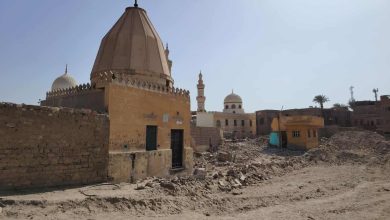

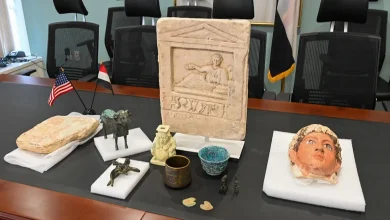
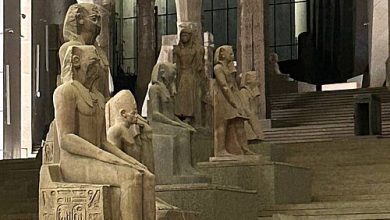
Hi, this is a comment.
To get started with moderating, editing, and deleting comments, please visit the Comments screen in the dashboard.